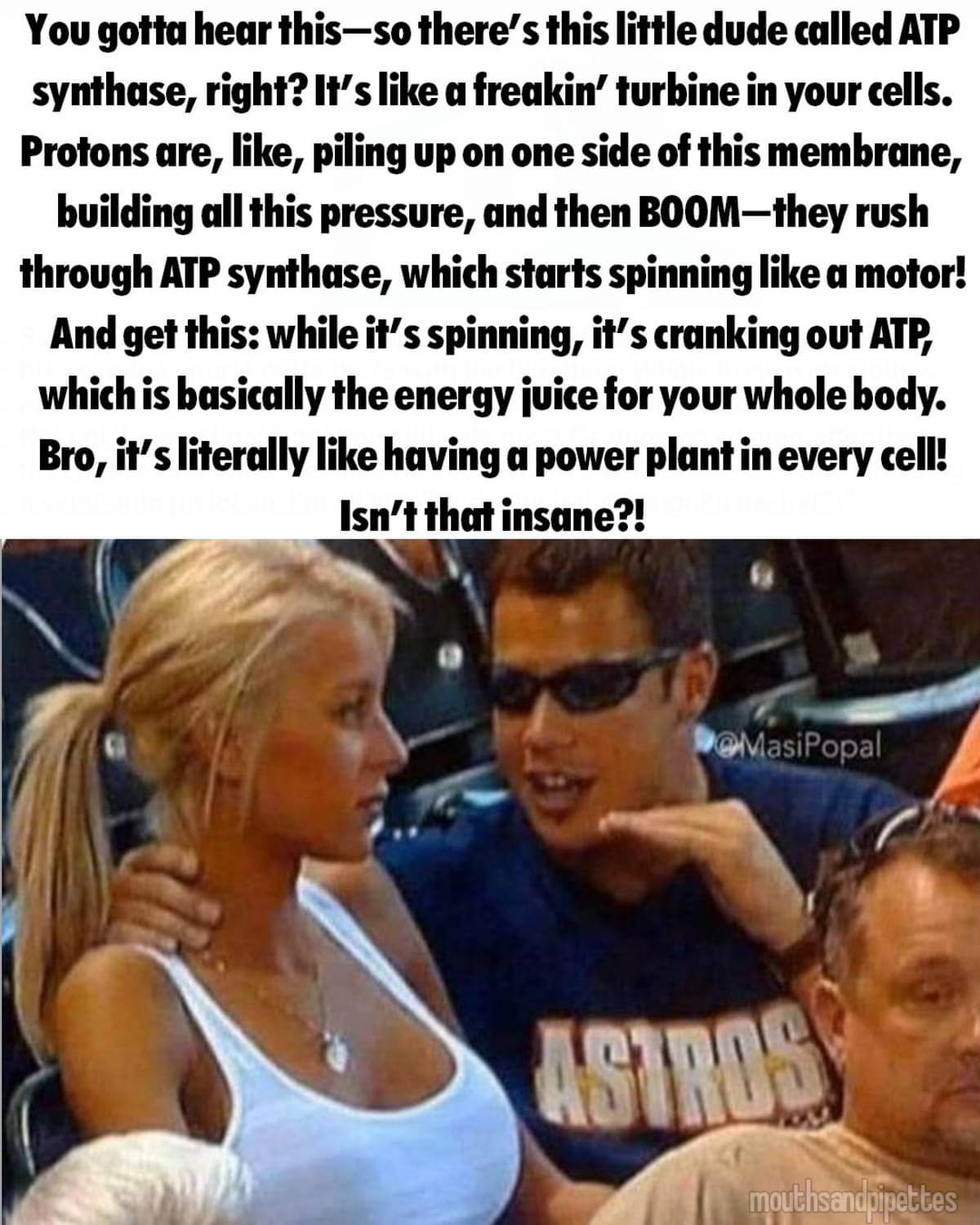this post was submitted on 10 Nov 2024
523 points (98.5% liked)
Science Memes
11068 readers
3334 users here now
Welcome to c/science_memes @ Mander.xyz!
A place for majestic STEMLORD peacocking, as well as memes about the realities of working in a lab.

Rules
- Don't throw mud. Behave like an intellectual and remember the human.
- Keep it rooted (on topic).
- No spam.
- Infographics welcome, get schooled.
This is a science community. We use the Dawkins definition of meme.
Research Committee
Other Mander Communities
Science and Research
Biology and Life Sciences
- [email protected]
- [email protected]
- [email protected]
- [email protected]
- [email protected]
- [email protected]
- [email protected]
- [email protected]
- [email protected]
- [email protected]
- [email protected]
- [email protected]
- [email protected]
- [email protected]
- [email protected]
- [email protected]
- [email protected]
- [email protected]
- [email protected]
- [email protected]
- [email protected]
- [email protected]
- [email protected]
- [email protected]
- !reptiles and [email protected]
Physical Sciences
- [email protected]
- [email protected]
- [email protected]
- [email protected]
- [email protected]
- [email protected]
- [email protected]
- [email protected]
- [email protected]
Humanities and Social Sciences
Practical and Applied Sciences
- !exercise-and [email protected]
- [email protected]
- !self [email protected]
- [email protected]
- [email protected]
- [email protected]
Memes
Miscellaneous
founded 2 years ago
MODERATORS
you are viewing a single comment's thread
view the rest of the comments
view the rest of the comments

Adenosine triphosphate (ATP) functions as the primary energy currency of the cell, enabling various biological processes. Here's an explanation of how ATP works on a molecular level:
Structure of ATP
ATP is composed of three main components:
Adenine: A nitrogenous base.
Ribose: A five-carbon sugar molecule, which together with adenine forms adenosine.
Three Phosphate Groups: Linked sequentially through high-energy bonds.
Energy Storage and Release
The key to ATP’s function lies in the high-energy bonds between its phosphate groups, particularly the bond between the second (beta) and third (gamma) phosphate groups.
When ATP is hydrolyzed (reacts with water), it loses its terminal (gamma) phosphate group, releasing energy.
The reaction is:
ATP + H2O > ADP + Pi + Energy
The hydrolysis of ATP releases about 30.5 kJ/mol (7.3 kcal/mol) of energy.
This energy is used to perform cellular work, such as muscle contraction, active transport across cell membranes, and chemical synthesis.
Mechanism of ATP Utilization
ATP transfers its phosphate group to another molecule (a process called phosphorylation), making that molecule more reactive.
This is often facilitated by enzymes known as kinases.
Cells couple the exergonic reaction of ATP hydrolysis with endergonic reactions (reactions that require energy).
For example, during muscle contraction, ATP hydrolysis provides the energy for the motor protein myosin to move along actin filaments.
ATP Synthesis
ATP is regenerated from ADP through cellular respiration, which consists of three main stages:
Glycolysis: Breakdown of glucose into pyruvate, producing a small amount of ATP.
Citric Acid Cycle (Krebs Cycle): Further breakdown of metabolic products, generating electron carriers (NADH and FADH2).
Oxidative Phosphorylation:
Electrons from NADH and FADH2 are transferred through the electron transport chain in the inner mitochondrial membrane.
This creates a proton gradient that drives ATP synthesis via ATP synthase.
ATP Synthase Function
ATP synthase is a complex enzyme that synthesizes ATP from ADP and using the energy derived from the proton gradient.
Proton Gradient: Protons flow back into the mitochondrial matrix through ATP synthase.
Rotational Catalysis:
The flow of protons causes the rotation of a part of ATP synthase.
This mechanical energy drives the chemical synthesis of ATP from ADP and .
In summary, ATP serves as a molecular battery, storing energy in its high-energy phosphate bonds and releasing it upon hydrolysis to fuel various cellular activities. Its synthesis and utilization are tightly regulated processes essential for life.
ChatGPT missing the question